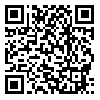1. Axelsson, A. (1991). Causes of tinnitus. Paper presented at the 4th International Tinnitus Seminar, Bordeaux, France, 27-30 August 1991.
2. Bahmad, F. M., Venosa, A. R., & Oliveira, C. A. (2006). Benzodiazepines and GABAergics in treating severe disabling tinnitus of predominantly cochlear origin. International Tinnitus Journal, 12(2), 140-4. PMID: 17260879 [
PMID]
3. Baskill, J. L., & Coles, R. R. A. (1999). Relationship between tinnitus loudness and severity. Paper presented at the 6th International Tinnitus Seminar. Cambridge, United Kingdom, 5-9 September 1999.
4. Coelho, C. C. D. B., Sanchez, T. G., & Bento, R. F. (2004). [Characteristics Tinnitus in Patients Given Reference Service (Portuguese)]. rq. Otorrinolaringol, 8(3), 216-224.
5. Coles, R. R. A. (1984). Epidemiology of tinnitus: (1) Prevalence. The Journal of Laryngology & Otology, 98(S9), 7–15. doi: 10.1017/s1755146300090041 [
DOI:10.1017/S1755146300090041]
6. Crummer, R. W., & Hassan, G. A. (2004). Diagnostic approach to tinnitus. American Family Physician, 69(1), 120-6. [
PMID]
7. Dias, A., & Cordeiro, R. (2008). Association between hearing loss level and degree of discomfort introduced by tinnitus in workers exposed to noise. Brazilian Journal of Otorhinolaryngology, 74(6), 876–83. doi: 10.1016/s1808-8694(15)30148-8 [
DOI:10.1016/S1808-8694(15)30148-8]
8. Erlandsson, S. I., & Holgers, K. M. (2001). The impact of perceived tinnitus severity on health-related quality of life with aspects of gender. Noise and Health, 3(10), 39-51. PMID: 12689455 [
PMID]
9. Figueiredo, R. R., Rates, M. A., de Azevedo, A. A., de Oliveira, P. M., & de Navarro, P. B. (2010). Correlation analysis of hearing thresholds, validated questionnaires and psychoacoustic measurements in tinnitus patients. Brazilian Journal of Otorhinolaryngology, 76(4), 522-6. PMID: 20835541 [
DOI:10.1590/S1808-86942010000400018] [
PMID]
10. Fioretti, A., Fusetti, M., & Eibenstein, A. (2013). Association between sleep disorders, hyperacusis and tinnitus: Evaluation with tinnitus questionnaires. Noise and Health, 15(63), 91. doi: 10.4103/1463-1741.110287 [
DOI:10.4103/1463-1741.110287]
11. Flores, L., Rosito, L., Seimetz, B., Dall'Igna, C., & Teixeira, A. (2015). Pitch and loudness from tinnitus in individuals with noise-induced hearing loss. International Archives of Otorhinolaryngology, 20(3), 248–53. doi: 10.1055/s-0035-1562935 [
DOI:10.1055/s-0035-1562935]
12. Granjeiro, R. C., Kehrle, H. M., Bezerra, R. L., Almeida, V. F., André, L. L. S., & Oliveira, C. A. (2008). Transient and distortion product evoked oto-acoustic emissions in normal hearing patients with and without tinnitus. Otolaryngology-Head and Neck Surgery, 138(4), 502–6. doi: 10.1016/j.otohns.2007.11.012 [
DOI:10.1016/j.otohns.2007.11.012]
13. Hallam, R. S., Jakes, S. C., Chambers, C., & Hinchcliffe, R. (1985). A comparison of different methods for assessing the "Intensity" of tinnitus. Acta Oto-Laryngologica, 99(5-6), 501–8. doi: 10.3109/00016488509182253 [
DOI:10.3109/00016488509182253]
14. Hiller, W., & Goebel, G. (2006). Factors influencing tinnitus loudness and annoyance. Archives of Otolaryngology–Head & Neck Surgery, 132(12), 1323-30. doi: 10.1001/archotol.132.12.1323 [
DOI:10.1001/archotol.132.12.1323]
15. Jastreboff, P. J., & Hazell, J. W. P. (1993). A neurophysiological approach to tinnitus: Clinical implications. British Journal of Audiology, 27(1), 7–17. doi: 10.3109/03005369309077884 [
DOI:10.3109/03005369309077884]
16. Jayarajan, V., Bartlett, J., & Ratnayake, S. A. B. (2009). Could an underlying hearing loss be a significant factor in the handicap caused by tinnitus. Noise and Health, 11(44), 156. doi: 10.4103/1463-1741.53362 [
DOI:10.4103/1463-1741.53362]
17. Karatas, E., & Deniz, M. (2011). The comparison of acoustic and psychic parameters of subjective tinnitus. European Archives of Oto-Rhino-Laryngology, 269(2), 441–7. doi: 10.1007/s00405-011-1655-2 [
DOI:10.1007/s00405-011-1655-2]
18. König, O., Schaette, R., Kempter, R., & Gross, M. (2006). Course of hearing loss and occurrence of tinnitus. Hearing Research, 221(1-2), 59–64. doi: 10.1016/j.heares.2006.07.007 [
DOI:10.1016/j.heares.2006.07.007]
19. Kuk, F. K., Tyler, R. S., Russell, D., & Jordan, H. (1990). The psychometric properties of a tinnitus handicap questionnaire. Ear and Hearing, 11(6), 434–45. doi: 10.1097/00003446-199012000-00005 [
DOI:10.1097/00003446-199012000-00005]
20. Lindgren, T., Wieslander, G., Dammström, B. G., & Norbäck, D. (2009). Tinnitus among airline pilots: Prevalence and effects of age, flight experience, and other noise. Aviation, Space, and Environmental Medicine, 80(2), 112–6. doi: 10.3357/asem.2364.2009 [
DOI:10.3357/ASEM.2364.2009]
21. Mahmoudian, S., Shahmiri, E., Rouzbahani, M., Jafari, Z., Reza Keyhani, M., Rahimi, F., et al. (2011). Persian language version of the" Tinnitus Handicap Inventory": Translation, standardization, validity and reliability. International Tinnitus Journal, 16(2), 93-103. PMID: 22249867 [
PMID]
22. Martines, F., Bentivegna, D., Di Piazza, F., Martines, E., Sciacca, V., & Martinciglio, G. (2010). Investigation of tinnitus patients in Italy: Clinical and audiological characteristics. International Journal of Otolaryngology, 2010, 1–8. doi: 10.1155/2010/265861 [
DOI:10.1155/2010/265861]
23. Martines, F., Bentivegna, D., Martines, E., Sciacca, V., & Martinciglio, G. (2010a). Assessing audiological, pathophysiological and psychological variables in tinnitus patients with or without hearing loss. European Archives of Oto-Rhino-Laryngology, 267(11), 1685–93. doi: 10.1007/s00405-010-1302-3 [
DOI:10.1007/s00405-010-1302-3]
24. Martines, F., Bentivegna, D., Martines, E., Sciacca, V., & Martinciglio, G. (2010b). Characteristics of tinnitus with or without hearing loss: Clinical observations in Sicilian tinnitus patients. Auris Nasus Larynx, 37(6), 685–93. doi: 10.1016/j.anl.2010.03.008 [
DOI:10.1016/j.anl.2010.03.008]
25. Meric, C., Gartner, M., Collet, L., & Chéry-Croze, S. (1998). Psychopathological profile of tinnitus sufferers: Evidence concerning the relationship between tinnitus features and impact on life. Audiology and Neurotology, 3(4), 240–52. doi: 10.1159/000013796 [
DOI:10.1159/000013796]
26. Newman, C. W., Jacobson, G. P., & Spitzer, J. B. (1996). Development of the tinnitus handicap inventory. Archives of Otolaryngology - Head and Neck Surgery, 122(2), 143–8. doi: 10.1001/archotol.1996.01890140029007 [
DOI:10.1001/archotol.1996.01890140029007]
27. Norena, A., Micheyl, C., Chéry Croze, S., & Collet, L. (2002). Psychoacoustic characterization of the tinnitus spectrum: Implications for the underlying mechanisms of tinnitus. Audiology and Neurotology, 7(6), 358–69. doi: 10.1159/000066156 [
DOI:10.1159/000066156]
28. Pan, T., Tyler, R. S., Ji, H., Coelho, C., Gehringer, A. K., & Gogel, S. A. (2009). The relationship between tinnitus pitch and the audiogram. International Journal of Audiology, 48(5), 277–94. doi: 10.1080/14992020802581974 [
DOI:10.1080/14992020802581974]
29. Pinto, P. C. L., Sanchez, T. G., & Tomita, S. (2010). The impact of gender, age and hearing loss on tinnitus severity. Brazilian Journal of Otorhinolaryngology, 76(1), 18-24. PMID: 20339684 [
DOI:10.1590/S1808-86942010000100004] [
PMID]
30. Roberts, L. E., Moffat, G., & Bosnyak, D. J. (2006). Residual inhibition functions in relation to tinnitus spectra and auditory threshold shift. Acta Oto-Laryngologica, 126(sup556), 27–33. doi: 10.1080/03655230600895358 [
DOI:10.1080/03655230600895358]
31. Savastano, M. (2008). Tinnitus with or without hearing loss: Are its characteristics different. European Archives of Oto-Rhino-Laryngology, 265(11), 1295–1300. doi: 10.1007/s00405-008-0630-z [
DOI:10.1007/s00405-008-0630-z]
32. Schecklmann, M., Vielsmeier, V., Steffens, T., Landgrebe, M., Langguth, B., & Kleinjung, T. (2012). Relationship between audiometric slope and tinnitus pitch in tinnitus patients: Insights into the mechanisms of tinnitus generation. PLoS ONE, 7(4), e34878. doi: 10.1371/journal.pone.0034878 [
DOI:10.1371/journal.pone.0034878]
33. Schleuning II, A. J. (1991). Management of the patient with tinnitus. Medical Clinics of North America, 75(6), 1225–37. doi: 10.1016/s0025-7125(16)30383-2 [
DOI:10.1016/S0025-7125(16)30383-2]
34. Searchfield, G., Jerram, C., Wise, K., & Raymond, S. (2007). The impact of hearing loss on tinnitus severity. Australian and New Zealand Journal of Audiology, 29(2), 67–76. doi: 10.1375/audi.29.2.67 [
DOI:10.1375/audi.29.2.67]
35. Sereda, M., Hall, D. A., Bosnyak, D. J., Edmondson Jones, M., Roberts, L. E., Adjamian, P., et al. (2011). Re-examining the relationship between audiometric profile and tinnitus pitch. International Journal of Audiology, 50(5), 303–12. doi: 10.3109/14992027.2010.551221 [
DOI:10.3109/14992027.2010.551221]
36. Seydel, C., Haupt, H., Olze, H., Szczepek, A. J., & Mazurek, B. (2013). Gender and chronic tinnitus. Ear and Hearing, 34(5), 661–72. doi: 10.1097/aud.0b013e31828149f2 [
DOI:10.1097/AUD.0b013e31828149f2]
37. Sweetow, R. W. (1986). Cognitive aspects of tinnitus patient management. Ear and Hearing, 7(6), 390–6. doi: 10.1097/00003446-198612000-00008 [
DOI:10.1097/00003446-198612000-00008]
38. Valente, J. P., Pinheiro, L. A., Carvalho, G. M., Guimarães, A. C., Mezzalira, R., Stoler, G., et al. (2012). Evaluation of factors related to the tinnitus disturbance. The International Tinnitus Journal, 17(1), 21-5. [
PMID]
39. Vallianatou, N. G., Christodoulou, P., Nestoros, J. N., & Helidonis, E. (2001). Audiologic and psychological profile of Greek patients with tinnitus—Preliminary findings. American Journal of Otolaryngology, 22(1), 33–7. doi: 10.1053/ajot.2001.20689 [
DOI:10.1053/ajot.2001.20689]
40. Vanneste, S., Joos, K., & De Ridder, D. (2012). Prefrontal cortex based sex differences in tinnitus perception: Same tinnitus intensity, same tinnitus distress, different mood. PLoS ONE, 7(2), e31182. doi: 10.1371/journal.pone.0031182 [
DOI:10.1371/journal.pone.0031182]
41. Welch, D., & Dawes, P. J. D. (2008). Personality and perception of tinnitus. Ear and Hearing, 29(5), 684–92. doi: 10.1097/aud.0b013e318177d9ac [
DOI:10.1097/AUD.0b013e318177d9ac]






